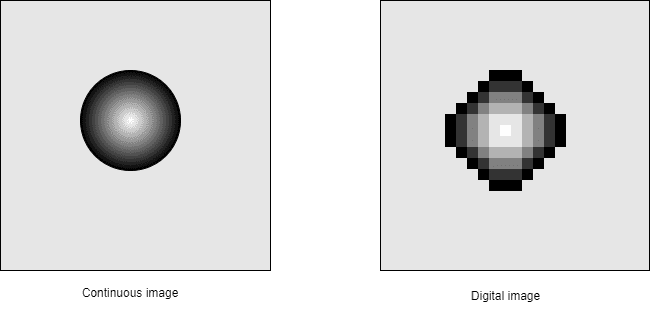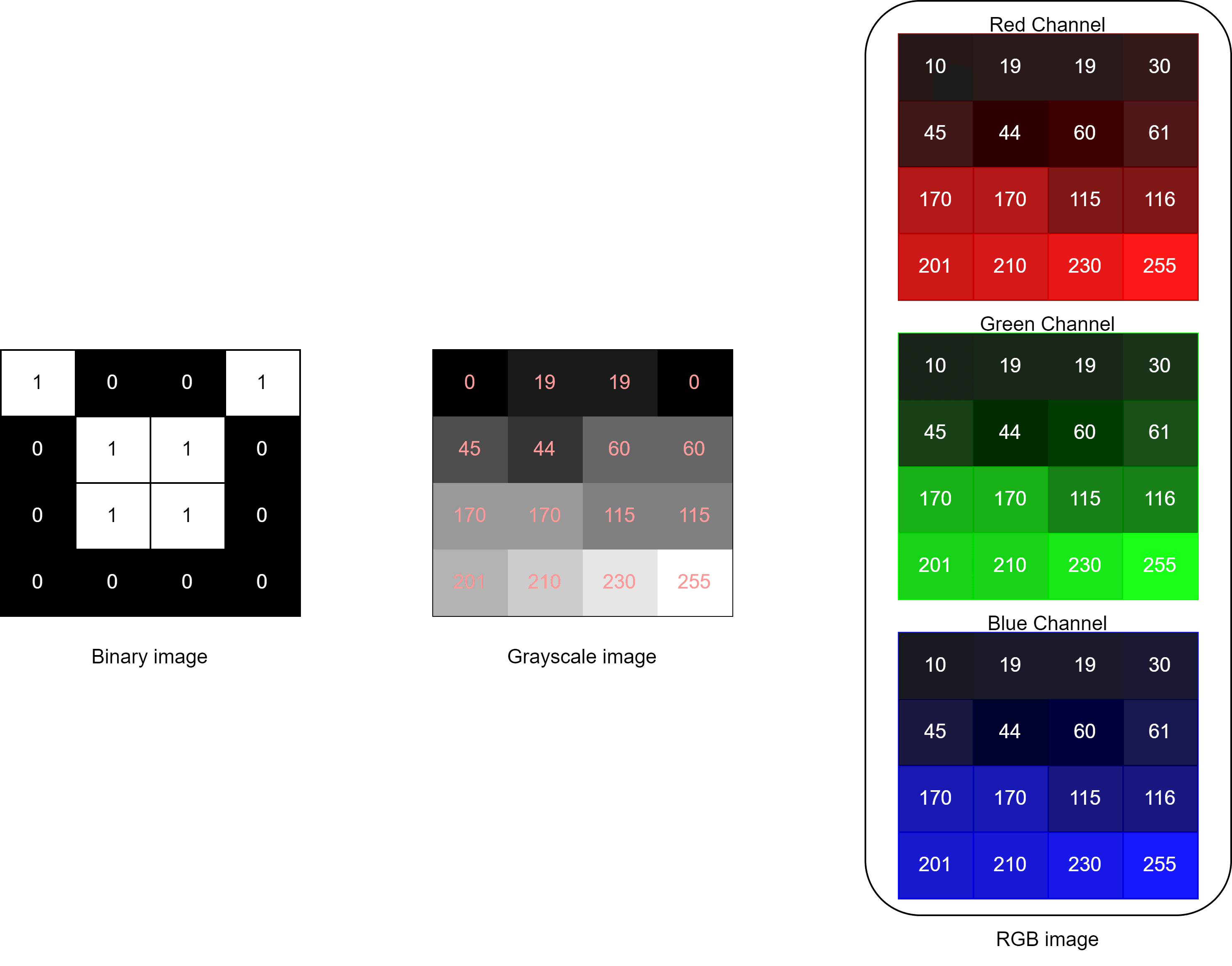1. 概述
在本教程中,我们将介绍数字图像处理中的两个基础操作:采样(Sampling) 与 量化(Quantization)。这两个步骤是将现实世界中的模拟图像转化为计算机可处理的数字图像的关键过程。
2. 图像处理简介
我们通过成像设备(如相机)中的传感器捕捉图像。传感器输出的是模拟信号,随后通过数字化处理,生成数字图像。
数字图像本质上是一个二维函数 ,其中
和
表示图像中的空间坐标,而函数值表示该点的亮度(Intensity)。
下图展示了数字图像的空间坐标与亮度值的可视化表示:
图像由像素(Pixel)组成,每个像素都有一个亮度值。为了增强图像或用于特定应用,我们需要对其进行一系列处理操作,而采样和量化正是这些操作中最基础的两个步骤。
3. 采样与量化
数字图像的数字化过程主要包括两个步骤:
- ✅ 采样(Sampling):对图像的空间坐标进行离散化。
- ✅ 量化(Quantization):对图像的亮度值进行离散化。
传感器捕捉到的是连续图像,经过采样和量化后,变成计算机可以处理的数字图像。下图展示了连续图像与数字图像之间的区别:
数字图像主要分为三类:
- ✅ 二值图像(Binary Image):每个像素值为 0(黑)或 1(白)
- ✅ 灰度图像(Grayscale Image):每个像素值在 0~255 之间,代表不同灰度
- ✅ 彩色图像(Color Image):如 RGB 图像,每个像素包含红、绿、蓝三个通道,每个通道值在 0~255 之间
下图展示了从二值、灰度和 RGB 图像中截取的 4×4 像素示例:
采样和量化最终生成一个由实数组成的矩阵。例如,一张 250 x 350 的图像意味着图像宽度为 250 像素,高度为 350 像素,即 250 列、350 行。
4. 优势
数字图像相比模拟图像有以下优势:
- ✅ 存储和检索更高效:数字图像更容易压缩、传输和管理。
- ✅ 支持压缩:可以通过多种算法压缩图像大小,便于网络传输。
- ✅ 便于图像分割:可识别图像中的点、线、边缘等不连续特征,用于图像裁剪或高亮。
- ✅ 设计与原型开发更便捷:降低了图像处理的成本。
5. 应用场景
采样与量化技术广泛应用于多个领域:
- ✅ 医学影像诊断:如 X 光、MRI 和 CT 扫描图像,帮助医生进行精准诊断。
- ✅ 遥感图像处理:用于空间探测,成本更低,效率更高。
- ✅ 计算机视觉(Computer Vision):是机器学习和深度学习的基础,数字图像为其提供了高质量的数据来源。
6. 小结
本文简要介绍了图像处理的基本概念,并重点讲解了采样与量化这两个关键步骤。这两个过程将模拟图像转化为数字图像,是后续图像增强、识别、压缩等应用的基础。
如果你是图像处理方向的开发者或者相关研究人员,理解和掌握采样与量化的原理,有助于你更好地设计图像算法、优化图像质量,甚至在实际项目中避免一些常见的“踩坑”问题。


